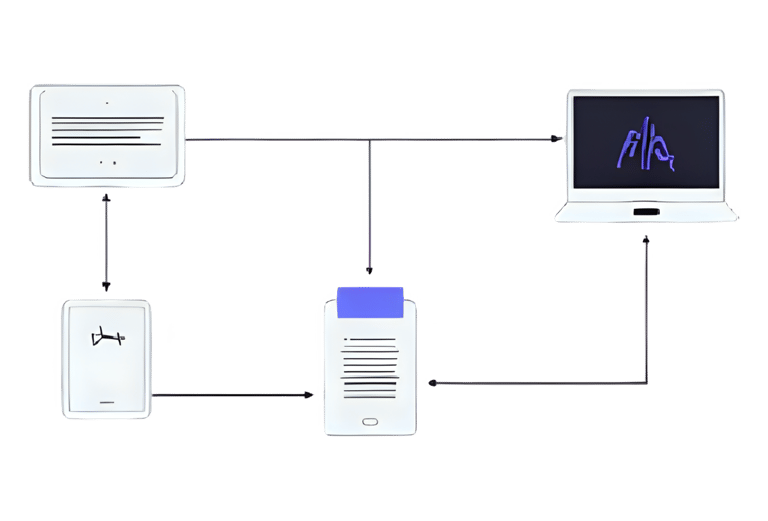The 3-Step Test: When Your Business Actually Needs Better Processes, Not AI
Stop wasting money on AI that won't solve your real problems. Here's how to know if you need better systems before investing in AI tools.
AI FUNDAMENTALS FOR BUSINESS
9/30/20253 min read


Recently, I was talking to a business owner who was absolutely convinced they needed AI automation for their customer onboarding process. They'd been researching tools for weeks and were ready to spend $3K+ on implementation.
A few minutes into our conversation, I realized they didn't have an AI problem. They had a process problem.
The reality is that AI can't fix broken processes. It just automates the chaos faster.
So before you invest in any AI solution (or really, any new tool), run through this simple 3-step test. It'll save you time, money, and a whole lot of frustration.
Step 1: Can You Draw It on Paper?
Seriously. Grab a whiteboard or a piece of paper and map out your current process from start to finish.
If you can't clearly diagram what happens now, AI won't help you. You're trying to automate something that doesn't actually exist as a repeatable system yet.
Red flags you have a process problem:
Different team members do the same task differently
You can't explain the process without saying "it depends"
Steps get skipped regularly and no one notices until there's a problem
The process only works when you do it
For the client above, they couldn't draw their onboarding flow because it changed depending on which team member handled it. Some sent welcome emails, some didn't. Some scheduled kickoff calls, others just sent a calendar link. Some collected information upfront, others chased it down later.
No amount of AI was going to fix that. They needed a standard operating procedure first.
Step 2: Is the Problem Actually About Decisions or Just About Doing?
AI excels at pattern recognition and prediction. Humans excel at judgment calls and nuanced decisions.
Ask yourself: Is this task repetitive and rules-based, or does it require context and discretion?
Good candidates for AI:
Sorting and categorizing information (emails, leads, support tickets)
Generating first drafts from templates (proposals, reports, emails)
Extracting data from documents (invoices, receipts, forms)
Scheduling and routine communication
Not ready for AI yet:
Tasks where quality depends on "really knowing the client"
Situations requiring judgment calls based on business context
Processes where exceptions are more common than the rule
Anything involving sensitive relationship management
Another client, a service business wanted AI to handle client communication. But their clients were high-touch and valued the personal relationship. The actual problem was that their team was spending hours on administrative work (scheduling, note-taking, invoice follow-ups) that left no time for meaningful client interaction.
Our solution was to automate the admin tasks so humans could focus on the relationship work. Not the other way around.
Step 3: Have You Actually Tried the Simple Fix?
I know, I know. AI sounds exciting. Process documentation sounds boring.
But I'm sure you've heard this many times, and it's true. The boring solution is usually the right one.
Before investing in AI tools, ask yourself:
Have we documented what actually works?
Have we trained everyone on the standard process?
Have we removed unnecessary steps that slow things down?
Have we clarified who's responsible for what?
So When DO You Actually Need AI?
After you've got clean processes in place, AI becomes incredibly powerful. Here's when it makes sense:
You're ready for AI when:
Your process is documented and repeatable
Your team follows it consistently
You can clearly articulate the desired outcome
The task is time-consuming but doesn't require deep expertise
You've identified a specific bottleneck that automation can solve
At that point, AI isn't a band-aid covering broken operations. It's a force multiplier making good operations even better.
The Bottom Line
I get it. AI is everywhere right now, and the fear of falling behind is real. But rushing into AI without solid processes is like buying a Ferrari when you don't know how to drive.
Start with the fundamentals:
Map your current process (even if it's messy)
Document what should happen every time
Train your team and get everyone aligned
Remove unnecessary complexity
Then look at where AI can accelerate what's already working
Your business will thank you. Your team will thank you. And honestly, your bank account will thank you too.
Not sure whether your business needs better processes, AI solutions, or both? That's exactly what we help business owners figure out. Book a free 15-minute strategy call and we'll talk through what's actually holding your business back.
